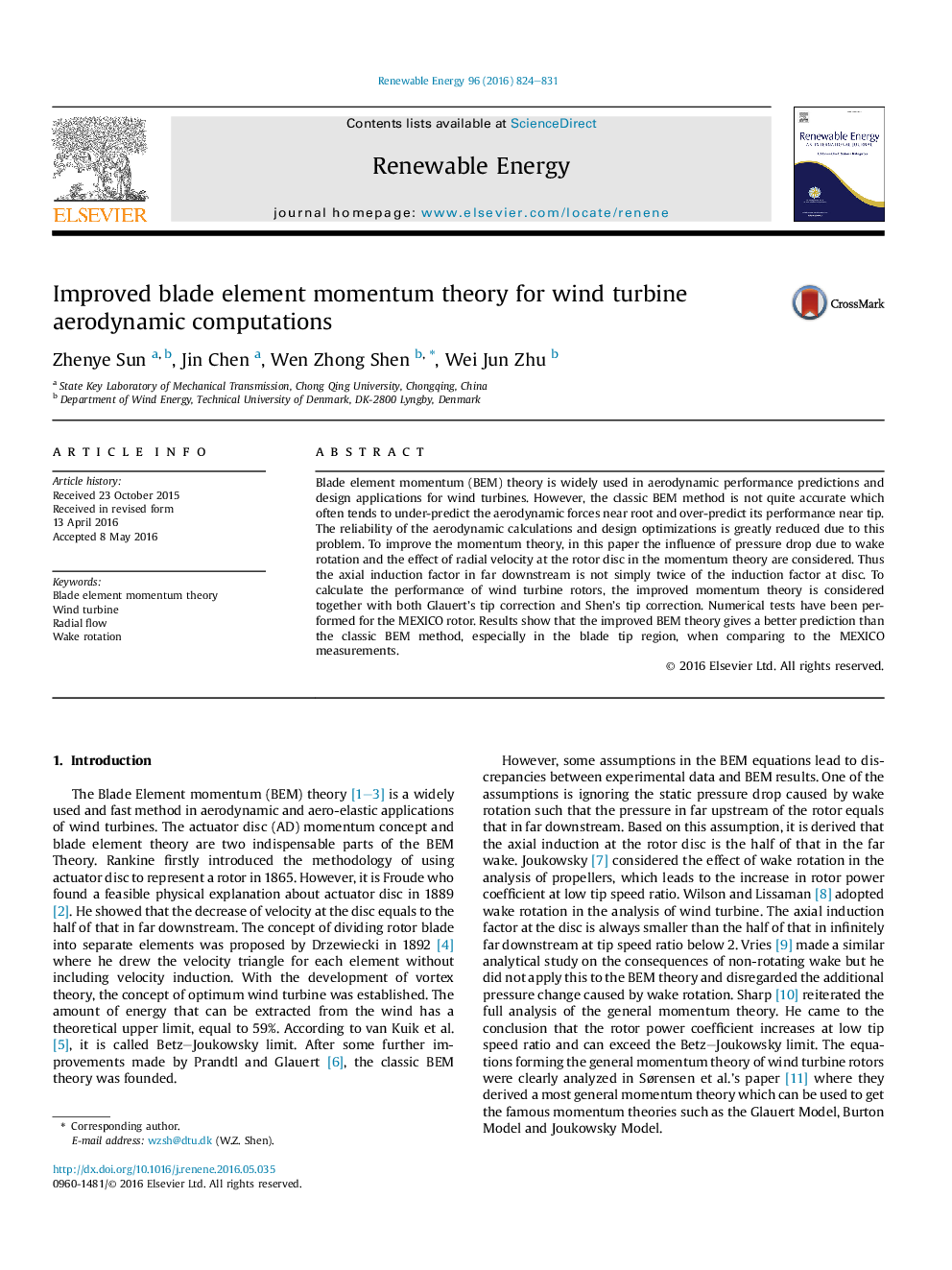| Article ID | Journal | Published Year | Pages | File Type |
|---|---|---|---|---|
| 10293922 | Renewable Energy | 2016 | 8 Pages |
Abstract
Blade element momentum (BEM) theory is widely used in aerodynamic performance predictions and design applications for wind turbines. However, the classic BEM method is not quite accurate which often tends to under-predict the aerodynamic forces near root and over-predict its performance near tip. The reliability of the aerodynamic calculations and design optimizations is greatly reduced due to this problem. To improve the momentum theory, in this paper the influence of pressure drop due to wake rotation and the effect of radial velocity at the rotor disc in the momentum theory are considered. Thus the axial induction factor in far downstream is not simply twice of the induction factor at disc. To calculate the performance of wind turbine rotors, the improved momentum theory is considered together with both Glauert's tip correction and Shen's tip correction. Numerical tests have been performed for the MEXICO rotor. Results show that the improved BEM theory gives a better prediction than the classic BEM method, especially in the blade tip region, when comparing to the MEXICO measurements.
Related Topics
Physical Sciences and Engineering
Energy
Renewable Energy, Sustainability and the Environment
Authors
Zhenye Sun, Jin Chen, Wen Zhong Shen, Wei Jun Zhu,
